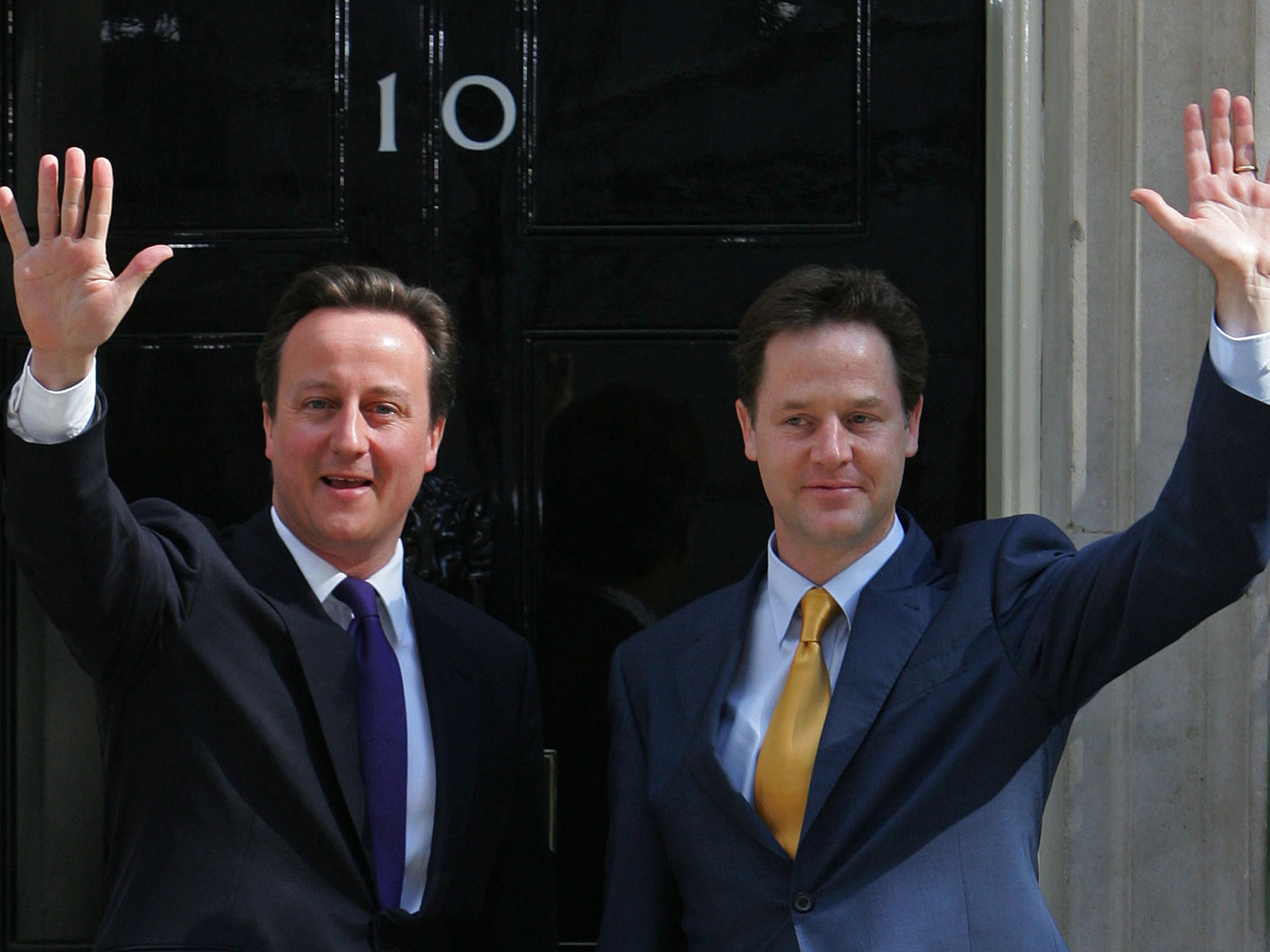How did the Coalition manage to work together so harmoniously?
Most people thought that if it did survive to the end, there would be more fights

Buried under all the excitement (or weariness) about the official start of the general election campaign yesterday was something rather significant. The Coalition broke up, and no one seemed all that bothered.
David Cameron and Nick Clegg drove in separate cars to Buckingham Palace for separate audiences with the Queen, and then their parties departed on separate brightly coloured battle buses for rallies in Wiltshire and Solihull. And that was that.
Given that most commentaries of the partnership between the Tories and the Lib Dems have leaned rather heavily on relationship metaphors, this was a very odd break-up indeed. Who leaves a partner of five years with such nonchalance? Neither party leader seemed that relieved or upset. Cameron didn’t appear to be singing Taylor Swift as he travelled to the Palace, and Clegg hadn’t, as far as we’re aware, arranged an evening in with some chocolates and a comforting film.
The most striking thing about the end of this partnership was the lack of rancour. Many had expected the Coalition to end much sooner. Most thought that if it did survive to the end, there would be more public fights, leaks of bad policies that one party had tried to get past the other, and more drama.
There were some spats: knife crime, when the Conservatives leaked secret letters about an internal row over mandatory sentencing to show that Nick Clegg was blocking changes the Tories wanted. These letters were part of ministerial “write-rounds”: normally confidential correspondence circulated among multiple government departments before being signed off as official policy.
Every minister has piles of letters showing who blocked which policy – Grant Shapps is a well-known serial blocker while Clegg, who chairs the committee that signs off most domestic policy, drove Tories to distraction by taking for ever to read the letters, let alone approve them. On both sides, aides stockpiled embarrassing leaks in case they needed them in the fraught final few months of government. But very few emerged. Indeed, the biggest rows have been between the Tories: Theresa May vs Michael Gove on extremism in schools, for instance.
In the past few weeks, Tory secretaries of state told me that their Lib Dem counterparts, and Clegg himself, suddenly grew colder, threatening to leak more information and cancelling regular meetings. One junior Lib Dem minister threatened to leak a perfectly innocuous announcement about pay for public servants unless the announcement was made immediately. But this was all pretty low-level stuff: the biggest row of the Coalition was on extremism again, this time between Theresa May and Nick Clegg, and much of that took place behind closed doors. The fact remains that this Coalition has surprised us with its serenity from beginning to end.
One of the reasons for the civility is that the two parties do expect to work together again after the general election. They don’t want things to turn so ugly that it’s impossible to do business again.
But this doesn’t mean that a second Tory-Lib Dem coalition would run as smoothly as this one has. The relationship is far more likely to resemble a couple who’ve taken one of those “breaks”, usually a prelude to splitting up for good, but before they’ve reached the stage of despising one another enough to do the dumping. When they get back together, everything seems soured, and the rows multiply.
The Lib Dems will have far fewer MPs to add up to a Commons majority, for one thing. Indeed, I understand No 10 has decided it can only rely on the votes of Lib Dems on the government payroll, as those who survive will be trying, mostly by being outspoken rebels, to persuade their constituents to give the Lib Dems yet another go in 2020. There might even be three people in this marriage: Cameron may have to turn to another minor party for support if Tory and Lib Dem seats don’t quite make a majority.
The two parties would also need to find things they could agree on, which will be extremely difficult in policy areas such as education and the environment, in particular. They have managed to avoid rows partly by doing very little in the dying days of this Parliament, but that won’t be so easy at the start of a new one.
Perhaps a new coalition will look more like the relationship we all first imagined. As the first one ends, though, we should still be surprised that two parties managed to work so well that they could ever get back together.
Join our commenting forum
Join thought-provoking conversations, follow other Independent readers and see their replies
Comments
Bookmark popover
Removed from bookmarks